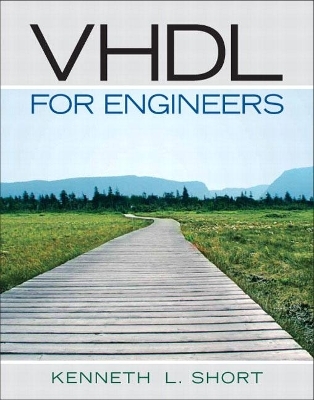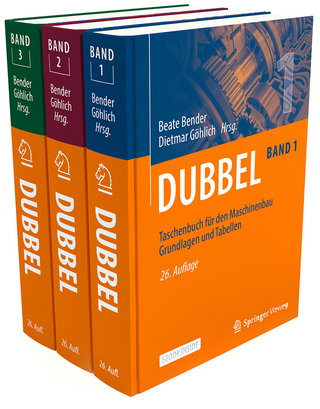
VHDL for Engineers
Pearson
978-0-13-142478-4 (ISBN)
- Titel erscheint in neuer Auflage
- Artikel merken
VHDL for Engineers, First Edition is perfect for anyone with a basic understanding of logic design and a minimal background in programming who desires to learn how to design digital systems using VHDL. No prior experience with VHDL is required. This text teaches readers how to design and simulate digital systems using the hardware description language, VHDL. These systems are designed for implementation using programmable logic devices (PLDs) such as complex programmable logic devices (CPLDs) and field programmable gate arrays (FPGAs). The book focuses on writing VHDL design descriptions and VHDL testbenches. The steps in VHDL/PLD design methodology are also a key focus. Short presents the complex VHDL language in a logical manner, introducing concepts in an order that allows the readers to begin producing synthesizable designs as soon as possible.
Preface
1 Digital Design Using VHDL and PLDs 1
1.1
VHDL/PLD Design Methodology 1
1.2
Requirements Analysis and Specification 5
1.3
VHDL Design Description 6
1.4
Verification Using Simulation 11
1.5
Testbenches 13
1.6
Functional (Behavioral) Simulation 16
1.7
Programmable Logic Devices (PLDs) 18
1.8
SPLDs and the 22V10 21
1.9
Logic Synthesis for the Target PLD 27
1.10
Place-and-Route and Timing Simulation 31
1.11
Programming and Verifying a Target PLD 37
1.12
VHDL/PLD Design Methodology Advantages 38
1.13
VHDL’s Development 39
1.14
VHDL for Synthesis versus VHDL for Simulation 39
1.15
This Book’s Primary Objective 40
2 Entities , Architectures , and Coding Styles 44
2.1 Design Units, Library Units, and Design Entities 44
2.2
Entity Declaration 45
2.3
VHDL Syntax Definitions 47
2.4
Port Modes 50
2.5
Architecture Body 53
2.6
Coding Styles 55
2.7
Synthesis Results versus Coding Style 66
2.8
Levels of Abstraction and Synthesis 69
2.9
Design Hierarchy and Structural Style 71
3 Signals and Data Types 82
3.1
Object Classes and Object Types 82
3.2
Signal Objects 84
3.3
Scalar Types 88
3.4
Type Std_Logic 93
3.5
Scalar Literals and Scalar Constants 99
3.6
Composite Types 100
3.7
Arrays 101
3.8
Types Unsigned and Signed 107
3.9
Composite Literals and Composite Constants 110
3.10
Integer Types 112
3.11
Port Types for Synthesis 116
3.12
Operators and Expressions 118
4 Dataf low Style Combinational Design 123
4.1
Logical Operators 123
4.2
Signal Assignments in Dataflow Style Architectures 127
4.3
Selected Signal Assignment 130
4.4
Type Boolean and the Relational Operators 132
4.5
Conditional Signal Assignment 134
4.6
Priority Encoders 139
4.7
Don’t Care Inputs and Outputs 140
4.8
Decoders 144
4.9
Table Lookup 147
4.10
Three-state Buffers 151
4.11
Avoiding Combinational Loops 155
5 Behavi oral Style Combinational Design 165
5.1 Behavioral Style Architecture 165
5.2
Process Statement 169
5.3
Sequential Statements 170
5.4
Case Statement 171
5.5
If Statement 176
5.6
Loop Statement 181
5.7
Variables 185
5.8
Parity Detector Example 188
5.9
Synthesis of Processes Describing Combinational Systems 193
6 Event-Driven Simulation 201
6.1
Simulator Approaches 201
6.2
Elaboration 203
6.3
Signal Drivers 208
6.4
Simulator Kernel Process 210
6.5
Simulation Initialization 212
6.6
Simulation Cycles 215
6.7
Signals versus Variables 223
6.8
Delta Delays 230
6.9
Delta Delays and Combinational Feedback 235
6.10
Multiple Drivers 239
6.11
Signal Attributes 241
7 Testbenche s for Combinational Designs 251
7.1
Design Verification 251
7.2
Functional Verification of Combinational Designs 255
7.3
A Simple Testbench 255
7.4
Physical Types 258
7.5
Single Process Testbench 260
7.6
Wait Statements 263
7.7
Assertion and Report Statements 265
7.8
Records and Table Lookup Testbenches 268
7.9
Testbenches That Compute Stimulus and Expected Results 272
7.10
Predefined Shift Operators 274
7.11
Stimulus Order Based on UUT Functionality 276
7.12
Comparing a UUT to a Behavioral Intent Model 279
7.13
Code Coverage and Branch Coverage 281
7.14
Post-Synthesis and Timing Verifications for Combinational
Designs 284
7.15
Timing Models Using VITAL and SDF 288
8 Latches and Flip - flops 304
8.1
Sequential Systems and Their Memory Elements 304
8.2
D Latch 308
8.3
Detecting Clock Edges 315
8.4
D Flip-flops 317
8.5
Enabled (Gated) Flip-flop 324
8.6
Other Flip-flop Types 328
8.7
PLD Primitive Memory Elements 331
8.8
Timing Requirements and Synchronous Input Data 332
9 MultibitLatches, Registers, Counters,
and Memory 337
9.1
Multibit Latches and Registers 337
9.2
Shift Registers 340
9.3
Shift Register Counters 346
9.4
Counters 348
9.5
Detecting Non-clock Signal Edges 360
9.6
Microprocessor Compatible Pulse Width Modulated Signal
Generator 366
9.7
Memories 370
10 Finite State Machines 380
10.1
Finite State Machines 380
10.2
FSM State Diagrams 386
10.3
Three Process FSM VHDL Template 388
10.4
State Diagram Development 392
10.5
Decoder for an Optical Shaft Encoder 403
10.6
State Encoding and State Assignment 409
10.7
Supposedly Safe FSMs 414
10.8
Inhibit Logic FSM Example 418
10.9
Counters as Moore FSMs 422
11 ASM Charts and RTL Design 431
11.1
Algorithmic State Machine Charts 431
11.2
Converting ASM Charts to VHDL 43
11.3
System Architecture 441
11.4
Successive Approximation Register Design Example 445
11.5
Sequential Multiplier Design 457
12 Subprograms 469
12.1
Subprograms 469
12.2
Functions 473
12.3
Procedures 480
12.4
Array Attributes and Unconstrained Arrays 484
12.5
Overloading Subprograms and Operators 491
12.6
Type Conversions 494
13 Packages 501
13.1
Packages and Package Bodies 501
13.2
Standard and De Facto Standard Packages 505
13.3
Package STD_LOGIC_1164 510
13.4
Package NUMERIC_STD (IEEE Std 1076.3) 516
13.5
Package STD_LOGIC_ARITH 523
13.6
Packages for VHDL Text Output 524
14 Testbenches for Sequential Systems 526
14.1
Simple Sequential Testbenches 526
14.2
Generating a System Clock 527
14.3
Generating the System Reset 531
14.4
Synchronizing Stimulus Generation and Monitoring 532
14.5
Testbench for Successive Approximation Register 538
14.6
Determining a Testbench Stimulus for a Sequential System 542
14.7
Using Procedures for Stimulus Generation 545
14.8
Output Verification in Stimulus Procedures 550
14.9
Bus Functional Models 552
14.10
Response Monitors 560
15 Modular Design and Hierarchy 566
15.1
Modular Design, Partitioning, and Hierarchy 566
15.2
Design Units and Library Units 571
15.3
Design Libraries 573
15.4
Using Library Units 574
15.5
Direct Design Entity Instantiation 577
15.6
Components and Indirect Design Entity Instantiation 580
15.7 Configuration Declarations 587
15.8
Component Connections 594
15.9
Parameterized Design Entities 598
15.10
Library of Parameterized Modules (LPM) 602
15.11
Generate Statement 605
16 More Design Examples 615
16.1
Microprocessor Compatible Quadrature
Decoder/Counter Design 615
16.2
Verification of Quadrature Decoder/Counter 624
16.3
Parameterized Quadrature Decoder/Counter 628
16.4
Electronic Safe Design 630
16.5
Verification of Electronic Safe 644
16.6
Encoder for RF Transmitter Design 649
Appendix VHDL Attributes 659
Bibliography 663
Index
| Erscheint lt. Verlag | 4.6.2008 |
|---|---|
| Sprache | englisch |
| Maße | 100 x 100 mm |
| Gewicht | 100 g |
| Themenwelt | Technik ► Elektrotechnik / Energietechnik |
| ISBN-10 | 0-13-142478-5 / 0131424785 |
| ISBN-13 | 978-0-13-142478-4 / 9780131424784 |
| Zustand | Neuware |
| Haben Sie eine Frage zum Produkt? |
aus dem Bereich


